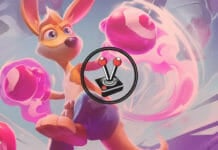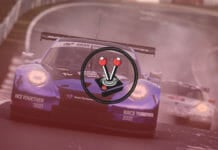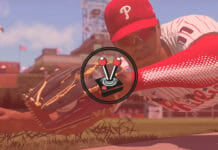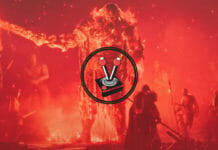Monster Hunter World is Capcom’s push to make the franchise a mainstream entry in the west. By doing so, they have also created a worthy contender for most accomplished role-playing game (RPG) on console and PC.
The geekosphere is saturated with RPGs and its various sub-genres. Especially that of the Japanese Role-playing Game genre (JRPG). I have played my fair share of them, and I can say, without a doubt, that I have not played a better modern JRPG than Monster Hunter World. While the recent Final Fantasy XV came very close, they are in totally different camps. Where one is a fantasy adventure game with science fiction elements, the other is grounded heavily in high fantasy. While I love both games, I must admit that the recent Square Enix title does not come close to what Capcom has to offer.
The game, which is available on the PlayStation 4 and Xbox One at the moment, will also come to PC later in 2018. It is a full-fledged, full-price release that is advertised to offer extensive progression systems, hours of gameplay, and countless quests. You know, the standard Japanese role-playing game fare. Putting what I already said above aside, here is the Vamers review of Monster Hunter World.
One for the history books! [Story]
What is a role-playing game without a story? Not much, to be honest. You see, the Japanese role-playing game (JRPG) genre prides itself on epic quests and narratives. To this day, both Legend of Dragoon (1999) and Chrono Trigger (1995) sit at the top of my JRPG list. This is because of their stories. So I am glad to confirm that Monster Hunt World has one of the longest narratives I have played in a good while.
It all starts out innocently enough: you are a hunter with the Fifth Fleet. You are also an A-list hunter, which means that you and your Handler (partner and quest giver) take on the Fifth’s most arduous hunts and expeditions. The premise of Monster Hunter World is that the Elder Dragons are all crossing the great divide to the New World — a mysterious and undocumented land far away from the established, and franchise-staple, Old World. It is a new world with new opportunities, new monsters, and new locales. Capcom could not have chosen a better way to introduce the game to an all-new audience, yet still paying homage to fans of the series.
The latest Elder Dragon to cross over is Zora Magdaros, a walking volcano with tar-like tendrils, featuring rocks and boulders for skin and scale. The Fifth Fleet followed Zora over to the New World as the Guild and Research Commission has never had a more ample opportunity to study the crossing in detail. However, everything is not as it first appears. It is up to the player to find out why the Elder Dragons make the crossing.
![Monster Hunter World is a JRPG lover's wet dream [REVIEW] 9 Monster Hunter World is Capcom's big push to get the franchise into a mainstream western market... and it did it spectacularly well.](https://vamers.com/wp-content/uploads/2018/02/Vamers-Reviews-Gaming-Mosnter-Hunter-World-is-every-JRPG-lovers-wet-dream-01-1024x576.jpg)
The story is an extensive journey to hunt down, capture, and study the Elder Dragon and its crossing. It involves taking on quests and expeditions to beautiful locales that span from a lush and ancient forest to arid wastes, and even a beautiful locale where coral grows without the need for water. In total, the story will take you through six major locations, including the player hub, with one or two story-only locations. Without spoiling anything, I can name only three: Ancient Forest, where the majority of the betas took place; Wildspire Wastes; and Coral Highlands. One of the included locations also acts as the main hub for the game: Astera.
By following the story the player is introduced to expeditions. These are literally just missions into the locales of the game, without the time-limit that hunts and quests give you. During expeditions, the player can farm ingredients, materials, and capture or slay various large monsters for their materials. It is also during expeditions that the player eventually figures out the whereabouts of Zora, and where he is headed.
The Commission, with the Fifth’s help, stages a bout with the Elder Dragon, and it goes… well, I am not going to say anything about that! What I will say, however, is that I legitimately thought this would be the end of the story. It was not. Instead, the story extends even further and takes you to the rest of the locales the game offers. It eventually leads to a quest that will really feel like the end; and in a way it is. It has cut-scenes, a fancy orchestral score that plays in the background, and hunters rejoicing… and then the third act opens with a bang. It should be noted that this was after I spent around 35 hours on the game, of which I would say 15 hours were spent solely on the main quest. Yes, there really is a lot of plot to go through in Monster Hunter World.
![Monster Hunter World is a JRPG lover's wet dream [REVIEW] 10 Monster Hunter World is Capcom's big push to get the franchise into a mainstream western market... and it did it spectacularly well.](https://vamers.com/wp-content/uploads/2018/02/Vamers-Reviews-Gaming-Mosnter-Hunter-World-is-every-JRPG-lovers-wet-dream-09-1024x576.jpg)
The third act of the game is pretty much the set up for the end-game: the high-rank stuff that earlier Monster Hunter titles are known for. The overall quest to figure out what the Elder Dragon Crossing is, has never been this close to being figured out. Yet now even more dangerous monsters are present to thwart the Commission and the Fifth Fleet.
All in all, the story is an epic journey about figuring out this mysterious migration that all Old World Elder Dragons make. There are no romance options, and no “epic plot twists from within the Fifth itself”, but there is no need for that. This is a Monster Hunter game, and it is about hunting monsters. The journey to do that is epic enough, and to enhance that the game also has incredible gameplay.
A Plethora of Things! [Gameplay]
It has a lot of stuff, including wonky multiplayer
Many others liken Monster Hunter World to games such as Dark Souls (2011) and Nioh (2017). While I can see how the comparisons hold, the game honestly plays a lot more like Ghost Recon: Wildlands (2017), with aspects of The Division (2016). The difference being that it is set in an epic high fantasy world. You see, in terms of the first two games mentioned, Monster Hunter World requires you to study the patterns of the monsters you hunt. You need to dodge at the right times, cut at the right limbs to cripple the monsters; and even use the correct tools for the job. You need to research everything about the world and the monster habitats to find out their weaknesses, and then exploit them. Monster Hunter World is all about becoming the best hunter there is, and you cannot do that by just rocking the basic starting gear throughout.
The reason I like to compare the game to Wildlands and The Division is because the actual gameplay appears to be inspired by those titles. Much like Wildlands, the player is constantly in a wide open world, where you need to explore, find clues and do missions. It also features the weird multiplayer mechanics featured in The Division. From the hub area to the locales you visit on expeditions, everything is instanced (areas that generates a new copy of the location for each group, or for certain number of players, that enter the area). In order to join up with a friend, you need to create an online session, or just matchmake into an established one. However, this is where the likenesses end.
![Monster Hunter World is a JRPG lover's wet dream [REVIEW] 11 Monster Hunter World is Capcom's big push to get the franchise into a mainstream western market... and it did it spectacularly well.](https://vamers.com/wp-content/uploads/2018/02/Vamers-Reviews-Gaming-Mosnter-Hunter-World-is-every-JRPG-lovers-wet-dream-04-1024x576.jpg)
Up to sixteen players can be part of a session, but no one will see each other at the start. For players to see each other, they must go to the Gathering Hub, a little spot at the top of the main hub where all players can interact. In order to join a friend, you have to create a squad and then allow your friend to join said squad. Players can then post quests at the quest handler, or the quest board, and others in the squad must accept.
The multiplayer aspect is probably the weakest part of the game, and it shows. While the starting tutorials are so basic and well done that players will figure out the game in the first few hours alone, I could not figure out how multiplayer worked. Not until a friend had to call me to explain how I could join their squad and load into the expedition that they had setup. I may also be wrong (since I only clocked about five hours or so with said friend), but I could not join any quest that I had not found myself. Therefore, to join a quest to hunt or slay a certain monster, I had to first go on an expedition into the locale, and sight it (let the game note that I saw the monster). Only then could I come back to join my friend’s investigations or quests. This is particularly wonky when trying to matchmake with others. I would improve this by simply having the game feature simple drop-in, drop-out mechanics such as Wildlands. Any progress made during the multiplayer session simply records as single-player progression. Nice and easy. Alas, this is not how it works in Monster Hunter World.
I am quite keen to find out if Capcom will change the way multiplayer works when the game releases on PC later this year? One can hope. Playing with friends aside, the rest of the Monster Hunter World is stellar in each and every way.
Tutorial all the things! Also, quests & expeditions
Since this is Capcom’s big push into mainstreaming the franchise; I must say that I feel like they have done a good job at opening the game to the masses. No more is Monster Hunter World a game just for the established fanbase. It is far more accessible than its predecessors.
The game features extensive, yet very easy to understand, tutorials about basically every facet the player comes across. From switching out gear to upgrading and crafting new gear; to always eating at the canteen before a mission; through to registering bounties and even selecting investigations — the game explains it all. This is by far the best aspect of the game: everything is so well explained.
The game offers three types of quests: Hunt, Capture, and Slay. Capturing and Slaying are pretty obvious. They involve the player going out into the field to find evidence of a certain monster (or monsters). Find enough evidence to track it to where it is roaming, and then proceed to either capture or slay it. These are straightforward quests that reward you with extra bits of the monster after you have completed it. Hunting quests are essentially the same, except these allow you to send the monster to an early grave.
![Monster Hunter World is a JRPG lover's wet dream [REVIEW] 12 Monster Hunter World is Capcom's big push to get the franchise into a mainstream western market... and it did it spectacularly well.](https://vamers.com/wp-content/uploads/2018/02/Vamers-Reviews-Gaming-Mosnter-Hunter-World-is-every-JRPG-lovers-wet-dream-03-1024x576.jpg)
It took me a while to figure out that hunting a monster and slaying one are not the same thing, which is why I am mentioning it here. At the beginning of each quest, you get a few free items supplied by the Commission. On capture quests, you will typically be given one or two traps and a bunch of tranquilisers. Similarly, on a slaying quest, the Commission will instead give you health boosters and stamina boosters along with ammo and arrow coatings (if your weapon uses those). Hunting quests, however, only give you health and stamina items. For the longest time, I thought that this was a just another kind of slaying quest. Let me tell you now: ALWAYS capture a Monster if you can. Not only does it reward you with more of its parts at the end, it also unlocks special slaying quests.
Where beating a monster to a pulp is easy to do, capturing takes a lot more skill. It requires you to restrain yourself a bit more during bouts with monsters in order to check their status. If they are limping, and retreating more often than usual, it means they are primed for a capture. All you have to do is set a trap in their path or wait for them to return to their nest. At the nest, you can place a trap right below them, wait for them to fall into it, and then throw tranq bombs in their faces until they are tranquillised. This would end the quest if it was done during a hunting, or capture quest. Capture quests will fail if a monster you have to hunt dies.
Furthermore, leading an expedition basically means that you will go and explore one of the locales, without being tied to a quest of some sort. During these, you can roam freely without worrying about a timer ticking down, or monsters not staying alive long enough to capture. In this mode, you can mine whatever you like and explore to your heart’s content. Large Monsters also roam freely here, just like during quests, but you do not need to hunt them down specifically. In this mode, you can return to the camp at any time to eat and prepare to capture or slay monsters, so long as they do not leave. You see, all monsters are on a schedule of their own. As nighttime comes up, some large monsters will leave the map altogether, while others will enter the map.
![Monster Hunter World is a JRPG lover's wet dream [REVIEW] 13 Monster Hunter World is Capcom's big push to get the franchise into a mainstream western market... and it did it spectacularly well.](https://vamers.com/wp-content/uploads/2018/02/Vamers-Reviews-Gaming-Mosnter-Hunter-World-is-every-JRPG-lovers-wet-dream-10-1024x576.jpg)
Expeditions also allow you to complete your registered bounties without the timer. You register bounties by talking to the research people at the main hub. Bounties include delivering certain materials, slaying a number of small monsters, or capturing one or two big monsters. They also involve completing investigations (which are optional missions you can pick before you set out on an expedition).
In the end, you are rewarded with monster pieces and materials that you need to use to make weapons and armour.
Weapons, Armour, Decorations & min-maxing to the best of your abilities
Right at the start, the player is told to go into a training area to try the various weapons the game has to offer. There are fourteen (14) in total, each with their own move sets and special abilities. As with all Japanese role-playing games, you can expect the classic — and overly huge — Buster Sword to be in the game, but there are also other weapons such as dual blades, a twin-bladed butterfly staff called the insect glaive, a huge sword that transforms into an axe, and even a massive metal bagpipe. It also has a bunch of other weapons. Needless to say, I decided to start the game out with the boring old sword & shield, but ended up using the bow a lot. Especially after I figured out its nuances in the training area and gained some experience with it on quests.
Similar to the weapons, but not unlike its limitation to only 14, the game also boasts gear sets: equipment pieces that hold various skill enhancements and special abilities. They also have unique attributes. Much like every weapon in the game, you also have to craft and upgrade gear by capturing monsters. Each piece of monster has its place in certain kinds of weapons or certain kinds of gear. After every hunt, it is imperative to go to the smithy and find out what kind of enhancements the new monster you just killed offers. The monsters from the Ancient Forest, for instance, will allow you to make the Jagras, Anja, and Pukei gear sets; as well as Blazing and Poison weapons, all of which are derivatives of the Bone upgrade tree.
While the armour and gear in the game can sometimes look a little weird and funky, you will grow accustomed to donning various sets of armour as you go through the game. Not one set of gear is good for all scenarios. As such, you will find yourself hunting down certain monsters to craft certain gear, just so you can take on one or two other monsters.
![Monster Hunter World is a JRPG lover's wet dream [REVIEW] 14 Monster Hunter World is Capcom's big push to get the franchise into a mainstream western market... and it did it spectacularly well.](https://vamers.com/wp-content/uploads/2018/02/Vamers-Reviews-Gaming-Mosnter-Hunter-World-is-every-JRPG-lovers-wet-dream-02-1024x576.jpg)
For reference, I had nine loadouts of different weapons, each with different armour, by the time that I completed the main quest. My most-used sets ended up being ones that enhanced my bow skills, whether that was enhancing the elemental damage my bow had or making me a better archer in other aspects.
Much later in the game (I am talking 40+ hours in), I unlocked the ability to set decorations on my higher-ranked armour pieces. Decorations are essentially just skill and ability enhancements, tacked onto the enhancements you already receive from the gear set you are wearing. There are also two versions of every high-rank armour: an alpha set, which gives you two bonus skills or enhancements, and a beta set, which looks a bit different and only has one enhancement or bonus. The beta sets, however, contain slots for decorations. At this part of the game, it is all about min-maxing your stats to be as efficient as possible. This is where I started to really use decorations and gear to my advantage as a bow user. I ended up with two extra charges on the bow, while dealing more damage overall, and even keeping my stamina up for longer periods of time.
But wait, there is more!
As you progress through the story, you will unlock the ability to cultivate and fertilise your own materials; meld items and decorations together to make other items and decorations; and even special arena quests. Not to mention the plethora of weekly events rotating in and out of the game, which give you unique rewards.
Right before the end of the first act, you will get a mission where you will unlock the Botanical Gardens. Here, you can give the botanical research team certain items, such as herbs or honey, and let them cultivate it for you to harvest after a set number of missions. This will effectively make it so you do not have to worry about buying potions anymore, since herbs and honey together craft into potions. Top tip for you there! Doing bounties and investigations that unlock more slots for the botanical garden will also unlock more materials and ingredients.
Melding is also something that only becomes available much later in the game. Opening up right after the second act, melding will allow you to take your useless loads of Monster Bone S, which is literally useless by the time you hit the third act, and create more useful items out of them. This is also where you can use your commendations and mysterious notes that you unlocked throughout the game and probably forgot about. The melding process later becomes equipped with the ability to meld decorations together to form other decorations that suit your play style more.
![Monster Hunter World is a JRPG lover's wet dream [REVIEW] 15 Monster Hunter World is Capcom's big push to get the franchise into a mainstream western market... and it did it spectacularly well.](https://vamers.com/wp-content/uploads/2018/02/Vamers-Reviews-Gaming-Mosnter-Hunter-World-is-every-JRPG-lovers-wet-dream-06-1024x576.jpg)
Arena quests are not that special, to be honest. All it does is allow you to hunt down and capture or kill whatever monster the quest is about. These quests only open up when you have captured the corresponding monster out in the field, either on a capture quest or on an expedition. These Special Arena quests make it easy to farm parts of a monster for that elusive weapon or armour upgrades.
There is also a tail rider safari that you unlock by the time act three rolls around. Using the tail rider safari, you can send out Palicos (”felyne” friends) to scavenge and hunt stuff for you. After a number of quests, they will return, and you can reap the rewards. If you need a Rathian Spike, and you sent them on a route with a Rathian, they may turn up with said spike! You can send them on these safaris while you focus on other aspects, such as grinding Jagras pelts in the arena or going on a main mission or two.
While I am certain that I mentioned all of it, I have a sneaking suspicion that a new feature will pop up the more I play. I have already clocked more than 40 hours into the game, completed the main story, and I am still discovering new things! I will certainly update this review should the need arise.
A New World filled with beauty and wonder [Visuals & Performance]
The game is a visual masterpiece. From the onset, you are met with gorgeously rendered faces and character models. Textures have zero to no pop-in and are crisp and clear. Honestly, I thought that I was given a pre-rendered cutscene at the start, until I saw my customised character, complete with cartoonish white hair, purple eyes and crazy face markings, also show up. This is when I realised that all cutscenes were in-engine. In Engine!
I am happy to say that the same beauty extends past the close-quarter cutscenes of the boat that the game starts in. Right afterwards, you are thrown out of the boat and onto a huge moving rock, complete with gushing magma. This is where you are treated to just how good the game can look during busy scenes. Colour me impressed when the User Interface (UI) appeared and told me to move my analogue sticks! I was so used to seeing Monster Hunter on the PlayStation Portable, that the graphics in this iteration completely blew me away.
Exactly the same can be said when you go to each locale in the game. Every explorable map offers outstanding new locales and environments that can only be dreamt of. The Coral Highlands, for instance, is stunning and is complete with pink and blue coral bits here and there. The coral shimmers in the sun too, and there is fauna everywhere. I love fantasy games that are not afraid to show off some colour. Why must everything always be dark and gloomy, right?
![Monster Hunter World is a JRPG lover's wet dream [REVIEW] 16 Monster Hunter World is Capcom's big push to get the franchise into a mainstream western market... and it did it spectacularly well.](https://vamers.com/wp-content/uploads/2018/02/Vamers-Reviews-Gaming-Mosnter-Hunter-World-is-every-JRPG-lovers-wet-dream-07-1024x576.jpg)
In terms of performance, I can safely say that the game is magnificent. I played the game on PlayStation 4 and noticed little to no hitching. There were one or two occasions where the framerate drops were quite severe, but the game recovered just as quickly as it happened. The game uses a weird checker boarding technique to create alpha channels within models. This way, every time I had to move my camera through a monster or see through a brush, said model would become half-transparent and a checkerboard wireframe would appear. It was subtle and well done. I have no idea how it works on the back-end, but it definitely helped make the game run with an impressive level of smoothness and detail.
In terms of loading, the game tended to take some time. While the locales are instanced, loading into them would sometimes take quite a bit longer than I would like. In earlier Monster Hunter Games, however, entire locales would be split into tiny areas that you would be forced to load into if you just accidentally stepped over a border. That is not the case here, and I assume that is why loading takes longer. It seems as if entire locales are loaded at once, allowing you to explore to your heart’s content. Much better than constant load times every few square meters.
As with most games releasing this year, Monster Hunter World also allows Xbox One X and PlayStation 4 Pro owners to cash in on their stronger consoles. The enhanced versions allow players to prioritise either 4K graphics or smooth framerates for that super-smooth, 60 frames-per-second combat. Forgive me if I am wrong, but I cannot, for the life of me, find good sources on this anywhere, but I swear that the game even featured enhanced particle effects when I saw it on Hans‘ PlayStation 4 Pro. If that is true, and it was not my eyes playing tricks on me, then this is definitely a reason to buy the stronger variants of the consoles.
A marvel for today’s standards [Conclusion]
In conclusion, I can happily say that this is by far one of the best Japanese role-playing games that I have played in a long while. This trumps Final Fantasy XV in just about every way, and that is a feat in itself since I am a huge fan of Square’s fantasy series.
The game features a heck of a lot of min-maxing. There are a plethora of weapons to master, each with their own upgrade tree; one set of armour for every monster in the game, each with its own abilities, stats, and skills; and even crafting! The game also features a slew of mission types, which will not have you feel burnt out after the first four or five hours of play. While you always do essentially the same thing, you never feel that way since you always focus on different aspects of it. Last, but certainly not least, the game is utterly gorgeous.
Although I played most of the game on a 1080p full high-definition screen, I did have a chance to play it on a 4K display. I tried and tested both of the game’s graphical presets, and it was a beautiful game through and through, each and every time. The bar for graphical fidelity has been set with Monster Hunter World, and it is one that high fantasy games must now strive towards.
In my opinion, the game is definitely worth a full-price purchase and is perfect for any lover of Japanese role-playing games. Heck, even if you just love role-playing games, this game will fit perfectly in your collection.
| Platform | PlayStation 4 |
| Difficulty | Normal |
| Time to Complete | 40+ Hours |
| Acquisition | Copy courtesy of Ster Kinekor Entertainment |
Junior Editor at Vamers. From Superman to Ironman; Bill Rizer to Sam Fisher and everything in-between, Edward loves it all. He is a Bachelor of Arts student and English Major specialising in Language and Literature. He is an avid writer and casual social networker with a flare for all things tech related.

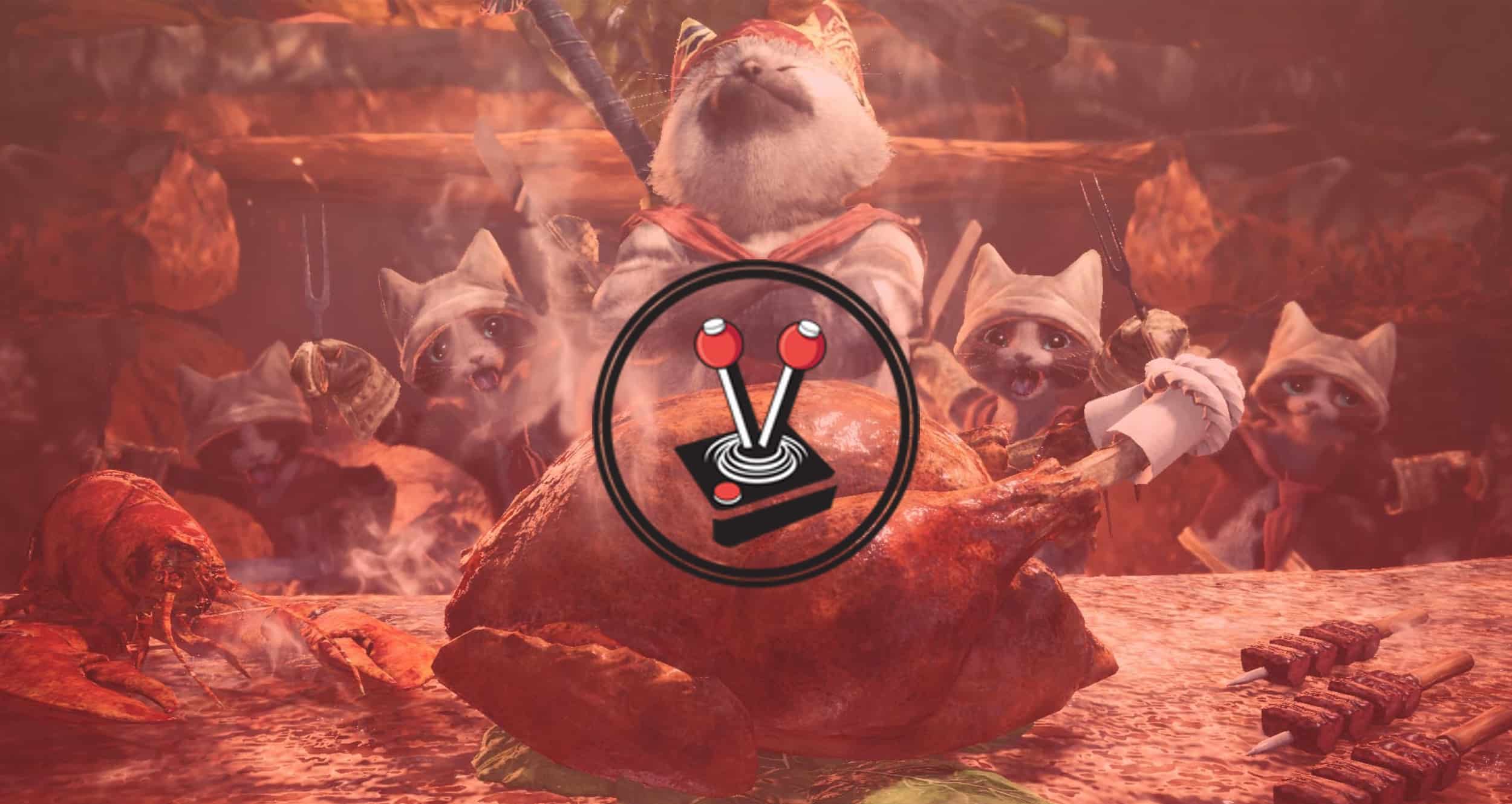
![Monster Hunter World is a JRPG lover's wet dream [REVIEW] 17 Monster Hunter World is Capcom's big push to get the franchise into a mainstream western market... and it did it spectacularly well.](https://vamers.com/wp-content/uploads/2022/01/Vamers-Authors-Profile-Image-Edward-Swardt-2022-150x150.png)
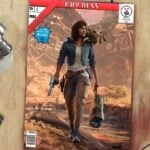
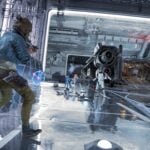


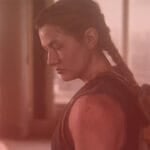
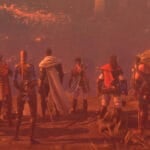


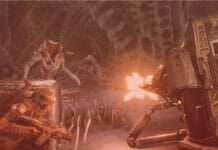
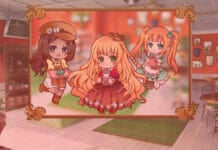
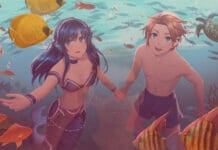


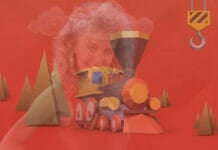
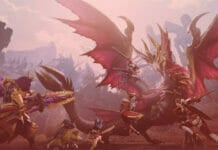
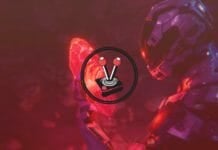
![Razer Kraken V3 Pro Review – Welcome to Boomtown [Redux]](https://vamers.com/wp-content/uploads/2022/07/Vamers-Technology-Razer-Kraken-V3-Pro-Review-Banner-218x150.jpg)
